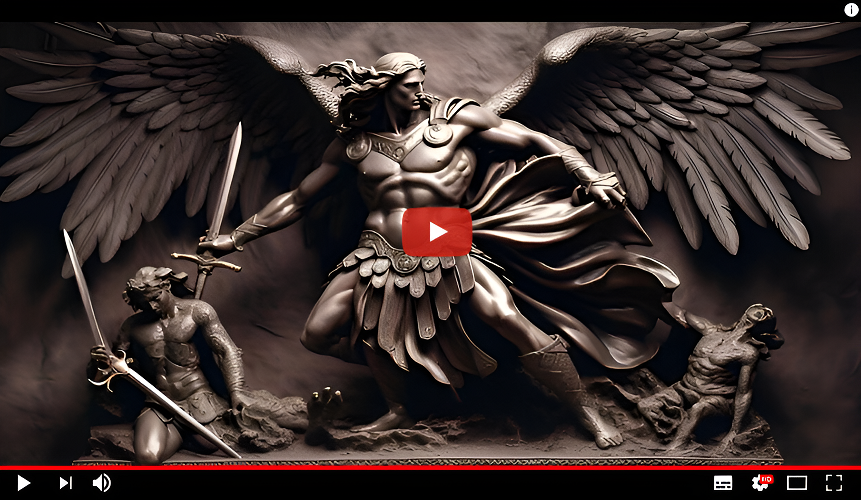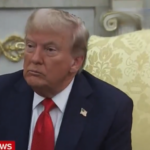By Medeea GreereAugust 6, 2024No Comments12 Mins Read
TwitterFacebookTelegramWhatsAppEmail

Share
URGENT ALERT! Pope Francis will be the Last Pope “ The Pope of the Apocalypse” – End Time Prophecy of the Popes!
Ready to uncover the truth? Sick of the lies? Join our Telegram Channel now. It’s time for the real story! My gratitude to all my readers!
In the murky depths of ancient prophecies lies a chilling prediction that has haunted the corridors of power within the Vatican for centuries. The Saint Malachy, revered for his miraculous deeds, left behind a cryptic list of future pontiffs, culminating in a prophecy that has sent shivers down the spines of believers and skeptics alike. At the heart of this foretelling is the ominous assertion that Pope Francis, the 266th pontiff, may well be the harbinger of apocalyptic doom, earning him the eerie epithet, “The Pope of the Apocalypse.” But is this prophecy truly divine, or merely the machination of mortal ambition?
The enduring allure of prophecy has captivated human imagination for eons, weaving a tapestry of mystique and intrigue that transcends time itself. Among the annals of prophetic lore, the enigmatic visions of Saint Malachy stand as a testament to the enduring fascination with the future. Born in the twelfth century, this Irish bishop left behind a legacy shrouded in mystery, his name forever intertwined with the fate of the papacy.
His alleged prophecy, a list of 112 future popes, has captured the imagination of believers and skeptics alike, offering a tantalizing glimpse into the unknown. Yet, it is his chilling assertion regarding the final pontiff that has ignited fervent debate and speculation for centuries to come.
Exploration of Malachy’s Prophecy
Saint Malachy’s prophecy, purportedly penned during a mystical vision in 1139, has long been a subject of fervent scrutiny and interpretation. Within its cryptic verses lies a succession of pontiffs, each identified by a symbolic epithet that purportedly foretells their reign. From Innocent II, described as “De medietate Lunae” or “Of the half moon,” to the enigmatic “Gloria Olivae,” allegedly denoting Benedict XVI, Malachy’s prophecy spans centuries of papal history with eerie precision.

Yet, it is the prophecy’s grim finale that has thrust it into the spotlight of speculation. According to Malachy, the final pope, “Peter the Roman,” will preside over a period of unprecedented turmoil within the Holy Roman Church, culminating in the cataclysmic judgment of humanity. It is this chilling assertion that has earned Pope Francis the ominous moniker, “The Pope of the Apocalypse.”
Despite the fervent belief of many, Malachy’s prophecy has not escaped the scrutiny of skeptics and scholars. The timing of its publication, attributed to the monk Arnold Wion in 1595, raises suspicions of tampering and manipulation. Critics point to the striking accuracy of the prophecy’s earlier entries, followed by a conspicuous decline in precision during the Renaissance era and beyond.
Don’t Miss This:
- Behind Vatican Walls Exposed: Black Nobility, White Pope, Grey Pope, Black Pope and Their Secret Societies in the Vatican
- Judy Byington Bombshell Report! Popes, Vatican Satanic Cult Ninth Circle Exposed: Cult Arrested with Caged Abused Babies and Body Parts Released Without Charges (video)
- Bombshell Report! Judy Byington: Vatican Pedophile Network Closed as Gold Repatriated to US Treasury
- EXPOSED: Satanic Mass, Demon Possession of Vatican & Pope Francis, Illuminati, Freemasons, Jesuits (video)
Moreover, the theory posited by French priest Louis Moreri suggests a more nefarious origin for the prophecy, linking it to the political machinations of Cardinal Girolamo Simoncelli during the papal conclave of 1590. According to Moreri, the prophecy may have been a calculated ploy to bolster Simoncelli’s bid for the papacy, casting doubt on its divine origins. In light of these doubts, the credibility of Malachi’s prophecy hangs precariously in the balance, caught between faith and skepticism.
Nostradamus and the End Times
While Malachy’s prophecy occupies a prominent place in the annals of eschatological lore, it is not the sole harbinger of apocalyptic doom. The writings of the famed seer Nostradamus have also fueled speculation about the end times, with his cryptic verses offering tantalizing glimpses into a future fraught with cataclysmic upheaval. In his magnum opus, “The Prophecies,” Nostradamus speaks of wars, natural disasters, and the rise of tyrants, painting a portrait of a world teetering on the brink of annihilation.
Guides and Angels: Embracing the Presence of Spiritual Guides in Our Lives!

The Science Channel’s “Decoding Nostradamus” delves into the intricacies of his predictions, suggesting that the famed astrologer may have foreseen the very Armageddon prophesied by Malachi. In the labyrinthine realm of prophecy, Nostradamus stands as a towering figure, his words echoing across the centuries with an eerie prescience that defies rational explanation.
Implications for the Future:
As the world hurtles towards an uncertain future, the prophecies of Malachy and Nostradamus serve as stark reminders of humanity’s inexorable march towards destiny. Whether viewed through the lens of faith or skepticism, these ancient prognostications force us to confront the fragility of our existence and the profound mysteries that lie beyond.
For believers, the prospect of Pope Francis as the harbinger of the apocalypse elicits a potent mix of fear and reverence, underscoring the profound significance of his pontificate in the eyes of history. Yet, amidst the clamor of prophecy and speculation, one truth remains immutable: the future remains veiled in shadow, its secrets known only to the hands of time.
In the hallowed halls of prophecy, the specter of the apocalypse looms large, casting a long shadow over the fate of humanity. From the cryptic verses of Saint Malachy to the enigmatic quatrains of Nostradamus, the echoes of the future reverberate through the corridors of time with an eerie insistence. Whether viewed as divine revelation or mere folly, these ancient prognostications compel us to confront the mysteries that lie beyond the horizon of our understanding.
As Pope Francis navigates the tumultuous waters of his pontificate, he carries with him the weight of prophecy, his every action scrutinized against the backdrop of apocalyptic anticipation. In the end, only time will reveal the ultimate truth behind the prophecies of Malachy and Nostradamus, leaving humanity to grapple with the uncertainty of its own destiny.
9 Things You Need to Know About the Prophecy of St. Malachy
Who was St. Malachy, what is the ‘prophecy,’ and what should we think of it?

After the announcement of Pope Benedict XVI’s resignation in 2013, many people started talking again about the “prophecy of the popes” attributed to St. Malachy. Who was he, what is the prophecy, and what should we think of it?
Here are 9 things you need to know:
1. What is “the prophecy of the popes?”
It is an alleged private revelation given to the medieval figure St. Malachy.
The prophecy consists of a list of 112 short phrases — enigmatic mottoes in Latin that are supposed to represent the popes from St. Malachy’s time onward. Click here for more on the “prophecy of the popes.”
2. Who was St. Malachy?
St. Malachy was the archbishop of Armagh, Ireland in the 1100s. Reportedly, he made a visit to Rome in which he had a vision of the future popes and wrote them down.
3. Why are people talking about the prophecy now?
The next-to-last motto in the prophecy of the popes has been associated with Pope Benedict XVI. Since he is now at the end of his papacy, that would bring us to the last name in the prophecy of the popes, which many have taken to indicate the final pope at the end of the world.
This passage reads as follows:
Peter the Roman, who will nourish the sheep in many tribulations; when they are finished, the city of seven hills will be destroyed, and the dreadful judge will judge his people. The end.
4. Is this an approved private revelation?
No, it is not. Although it has been influential in some Catholic circles for several hundred years, it is not approved by the Magisterium.
Divine Dialogue: Mysterious Secret Phrase UNLOCKS the Power to Have Every Prayer Answered Instantly!

5. What evidence is there concerning its authenticity?
A significant mark against its authenticity is the fact that it was not published until 1595, though St. Malachy died in 1148. There is no record of the prophecy existing in the intervening 447 years.
Allegedly, this was because the prophecy lay, forgotten, in a Roman archive, and it was not rediscovered until 1590.
This explanation is possible in principle, but the fact that we cannot establish its existence for hundreds of years until after its supposed author’s death is also consistent with the claim that it was a forgery composed around 1590 and then “salted” into the archive. (“Salting” is the term used for planting false records in archives.) It also may never have been in the archive but merely claimed to be.
While the fact that we have no mention of this document in the hundreds of years between the times of its reported composition and re-discovery does not prove that it is false, it does cast significant doubt on its authenticity.
6. How else can the reliability of the prophecy be evaluated?
If it is not possible to establish an external, historical record for the prophecy then the next logical approach is to examine its contents to see which theory of its origins they are more consistent with: Do the contents seem to suggest that it was written in the 1100s or do they suggest that it was written around 1590?
Many observers have thought the latter. One reason is that the “mottoes” for the period prior to 1590 are very easy to connect with the popes they allegedly represent.
By contrast, the mottoes assigned to the popes coming after 1590 are much harder to connect with the popes they allegedly represent, and often this can be done only in a contrived way.
The mottoes generally contain references to one of several things, including the pope’s name (his papal name, his birth name, or his family name), his place of origin, or a heraldic crest connected with him (his papal arms, his family crest, or the crest of his order or place of origin).
They often involve plays on words regarding these things, though that is more obvious in Latin than in English.

7. What are some examples of mottoes that are easy to connect with popes prior to 1590?
Some examples include:
Ex castro Tiberis (“From a castle on the Tiber”). This is connected with Celestine II (1143-1144), who was born in Citta di Castello (City of the Castle), which is on the banks of the Tiber river.
Frigidus abbas (“Cold Abbot”). This is connected with Benedict XII (1334-1342), who had been the abbot of a monastery at Fontfroide (“Cold Spring”).
De parvo homine (“From a small man”). This is connected to Pius III (1503), whose family name was Piccolomini, which is derived from piccolo (small) and uomo (man).
8. What are some examples of mottos that are hard to connect with popes after 1590?
Some examples include:
Pia civitas in bello (“Pious city in war”). This is connected with Innocent IV (1591), but there is no good way to link him with this motto. Some have pointed to the fact that he was patriarch of Jerusalem before his election to the papacy, and Jerusalem could be thought of as a “pious city,” but so could Rome and many others. Almost any Christian city would count, and Jerusalem was not a Christian city at this time. Furthermore, Jerusalem was not at war when he was patriarch.
Aquila rapax (“Rapacious eagle”). This is connected with Pius VII (1800-1823), but there is no good way to link him with this motto. Some have proposed that his reign overlapped with that of Napoleon and that Napoleon could be described as a rapacious eagle (that is, a hungry commander of armies), but this is very tenuous and makes the motto not a description of the pope but of someone else who was on the world stage during his reign.
Religio depopulata (“Religion destroyed”). This is connected with Benedict XV (1914-1922), but there is no good way to link him in particular with this motto. There is no obvious connection to his name, family, place of origin, or coat of arms. He did not destroy religion or religious life. Neither were either destroyed during his reign. He did reign during World War I, but that did not destroy either. He also reigned when Communism came to power in Russia. That didn’t destroy religion in his day or in Italy.
And again, we’d be connecting the motto with something other than the pope. If that were allowed then it would be possible to connect every motto with something that happened somewhere in the world during a pope’s day, and the prophecies would have no particular value as they would all be applicable to any pope.

9. Should Catholics worry about the prophecy of the popes?
No. It is not an approved apparition, and the evidence is consistent with it being a forgery composed around 1590.
More fundamentally, Jesus indicated that we would not know the time of the end.In keeping with Our Lord’s warning, predictions of the end of the world based on the Bible have a dismal track record, and trying to predict the time of the end based on an unapproved private revelation that shows signs of being forged is even more foolish.
We should trust God, live according to his word, and leave the future in his hands.
As Jesus said:
Therefore do not be anxious about tomorrow, for tomorrow will be anxious for itself. Let the day’s own trouble be sufficient for the day (Matthew 6:34).


